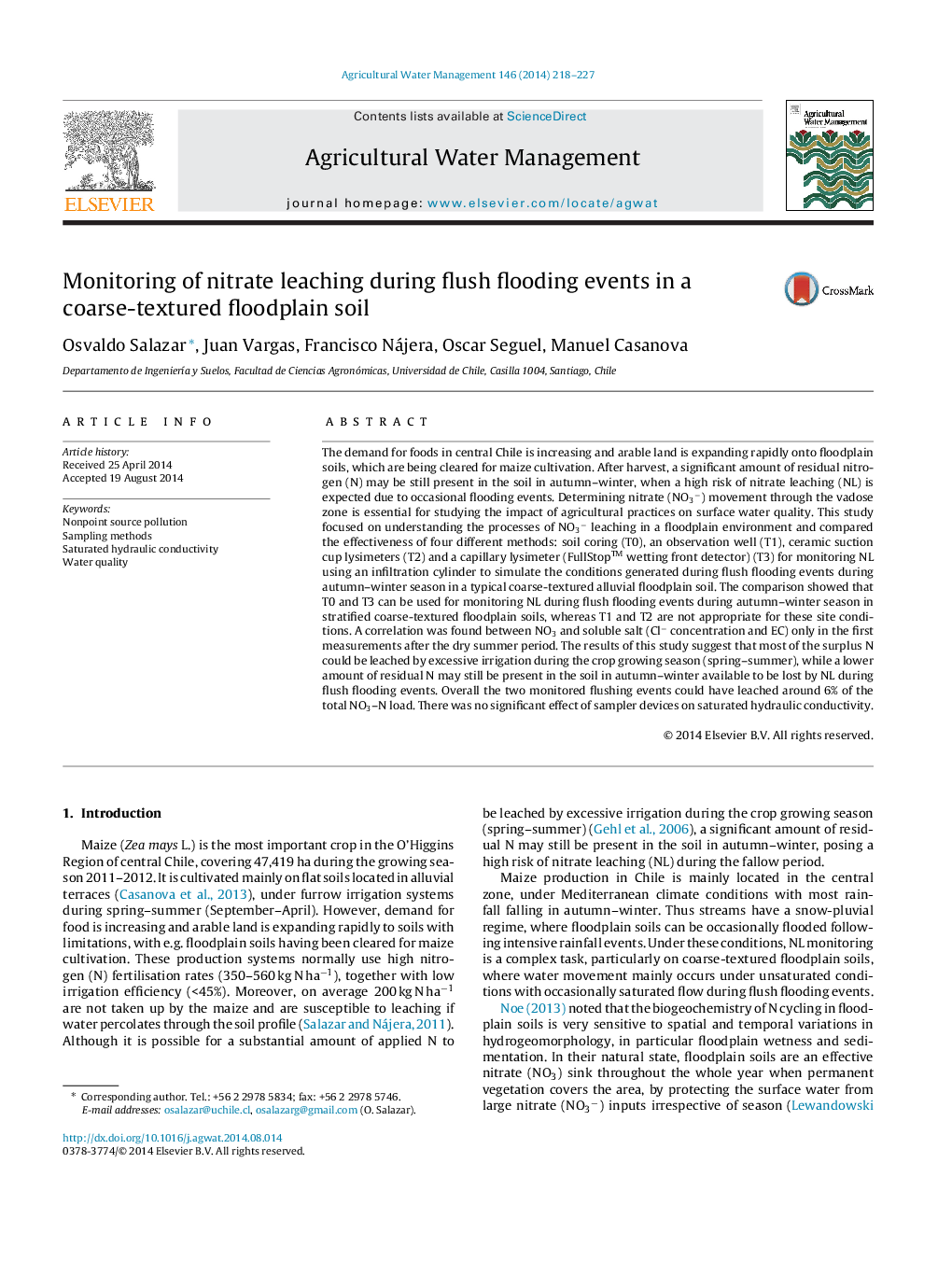| Article ID | Journal | Published Year | Pages | File Type |
|---|---|---|---|---|
| 6363960 | Agricultural Water Management | 2014 | 10 Pages |
Abstract
The demand for foods in central Chile is increasing and arable land is expanding rapidly onto floodplain soils, which are being cleared for maize cultivation. After harvest, a significant amount of residual nitrogen (N) may be still present in the soil in autumn-winter, when a high risk of nitrate leaching (NL) is expected due to occasional flooding events. Determining nitrate (NO3â) movement through the vadose zone is essential for studying the impact of agricultural practices on surface water quality. This study focused on understanding the processes of NO3â leaching in a floodplain environment and compared the effectiveness of four different methods: soil coring (T0), an observation well (T1), ceramic suction cup lysimeters (T2) and a capillary lysimeter (FullStop⢠wetting front detector) (T3) for monitoring NL using an infiltration cylinder to simulate the conditions generated during flush flooding events during autumn-winter season in a typical coarse-textured alluvial floodplain soil. The comparison showed that T0 and T3 can be used for monitoring NL during flush flooding events during autumn-winter season in stratified coarse-textured floodplain soils, whereas T1 and T2 are not appropriate for these site conditions. A correlation was found between NO3 and soluble salt (Clâ concentration and EC) only in the first measurements after the dry summer period. The results of this study suggest that most of the surplus N could be leached by excessive irrigation during the crop growing season (spring-summer), while a lower amount of residual N may still be present in the soil in autumn-winter available to be lost by NL during flush flooding events. Overall the two monitored flushing events could have leached around 6% of the total NO3-N load. There was no significant effect of sampler devices on saturated hydraulic conductivity.
Related Topics
Life Sciences
Agricultural and Biological Sciences
Agronomy and Crop Science
Authors
Osvaldo Salazar, Juan Vargas, Francisco Nájera, Oscar Seguel, Manuel Casanova,
